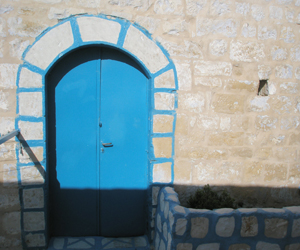Safed in the War of Independence
The capture of Safed was very important in the War of Independence. This was because Safed, with its high elevation and its northern location, was, and is, a very strategic site. It is also, of course, a religiously significant location and one that the Jewish people wanted to secure for themselves. The operation to capture Safed was known as Operation Yiftach and was a very important undertaking during the 1948 Israel War of Independence.
Operation Yiftach
On April 15, when the British officially withdrew from Safed and many other locations, the Palmach infiltrated the city to prepare for this battle. They helped to bolster the defense of the city and to help the Jews who were besieged in the Jewish quarter. When the British withdrew, the Arabs were able to secure the upper hand and to take control of the strategic points around the city. These sites included the police fortress on Mount Cana'an, an ancient fortress in the town, and the Shalva House.
Strategy by the Palmach
On April 28, 1948, the Haganah made a number of strategic moves in and around Safed. They took over the Rosh Pinah police fortress and a nearby army camp that the British had occupied. They also took over the villages of Birya and Ein Zeitun to the North of Safed. This allowed them to create a corridor leading to the Jewish quarter in Safed and to move supplies in to the starving people in the quarter. Then, on May 3, a second Palmach unit entered Safed.
Failure and then Success
On May 6, the first Jewish attack on the city ended in failure when the Arabs brought in reinforcements. On May 10th, however, the battle ended with the Jews capturing key positions in Safed. Although the Jews assured the Arabs in the city that they would not be hurt, most of the 10,000 Arab residents of Safed fled to neighboring towns and villages. This then paved the way for Jewish forces to take control of all of Safed and the surrounding areas.
The Yiftach Operation
Seen in retrospect, the Yiftach Operation was a tremendous success. It achieved all of its stated objectives and it liberated the Upper and Eastern Galilee areas for the Jews. To this day, when you visit Safed, you'll see remnants from the battle in 1948. Some of the older buildings still have the bullet marks that they suffered during this battle, and some of the military equipment has been left as a reminder of the fighting that took place in this historic and religiously significant city.

